Hygrophila polysperma ‘Rosanervig’
Scientific name: Hygrophila polysperma ‘Rosanervig’
Family: Acanthaceae
Maximum size reached under cultivation: 20 - 50 cm (7.87 - 19.69 inch)
014
Recommended pH range: 6.1 - 7.7
Recommended water hardness: 5 - 18°dGH (89.29 - 321.43ppm)
0°C 32°F30°C 86°F
Recommended temperature range: 20 - 26 °C (68 - 78.8°F)
Preferred propagation method: Cuttings
Native to: Cultivated form / Hybrid
Growth rate: Fast
Recommended substrate: Fine gravel
Lighting requirements: Medium
Ideal placement in tank: Background
Common Name
Sunset Hygro
Origin
Hygrophila polysperma ‘Rosanervig’ is a cultivated variety of Hygrophila polysperma, originally developed for its striking appearance. Unlike the wild form, this cultivar does not occur naturally in the wild. It is maintained through propagation in aquariums and nurseries.
Growing Conditions
This plant thrives in both submerged and emersed conditions. When grown submerged under medium to bright lighting, it displays vibrant pinkish hues with characteristic light-colored or white veins. The stronger the lighting, the more intense the coloration becomes. In emersed conditions, it can produce small purple flowers, though this usually results in the loss of some lower leaves.
Hygrophila polysperma ‘Rosanervig’ prefers nutrient-rich water and substrate, with a pH range of 6.1 to 7.7 and water hardness between 5 - 18 dGH. The ideal temperature range is 20 - 26 °C (68 - 78.8°F). Although CO2 supplementation is not strictly required, it can further enhance coloration and growth rate.
Planting Area
Reaching heights of 20 to 50 cm (7.87 - 19.69 inches), this plant is best suited for the background of aquariums. When planted in dense groups, it creates a colorful and dynamic backdrop. Regular pruning is recommended to maintain compact growth and prevent shading of smaller plants.
Propagation
Hygrophila polysperma ‘Rosanervig’ propagates easily via cuttings. Take a healthy stem from the mother plant, remove the lower leaves, and insert it gently into the substrate. Roots will typically form quickly, even without additional support. Under optimal conditions, new plants may also grow from leaves that have settled on the substrate.
Difficulty
This plant is considered easy to moderate in terms of care. It is suitable for beginners who provide adequate lighting and nutrients. However, for the best coloration, a moderate level of lighting is necessary. If nutrients are lacking, the plant may lose color and shed its lower leaves.
Short Description
Hygrophila polysperma ‘Rosanervig’, also known as Sunset Hygro, is a fast-growing and visually striking aquarium plant prized for its pink hues and contrasting veins. It grows well in a variety of water conditions and adapts easily to submerged or emersed growth.
Thanks to its rapid growth and decorative appearance, it is a popular choice among aquascapers. However, due to its invasive potential in some regions, proper trimming and responsible disposal of plant material are highly recommended to avoid spreading it into local waterways.
Frequently Asked Questions about Hygrophila polysperma ‘Rosanervig’
-
Is Hygrophila polysperma ‘Rosanervig’ a natural species?
No, it is a cultivated variant of Hygrophila polysperma, selected for its attractive coloration and veined leaves. It does not occur naturally in the wild.
-
Does this plant need CO2 to grow well?
CO2 is not necessary, but it helps enhance coloration and speeds up growth. The plant will grow under medium lighting without CO2, but the pink hues will be less intense.
-
Why are the leaves turning green instead of pink?
Insufficient lighting is the most common reason. To achieve the signature pink color, provide bright lighting and a nutrient-rich environment.
-
Can I grow this plant above water?
Yes, it grows well in emersed conditions and may even flower. However, it may lose its lower leaves and become less attractive for aquascaping.
-
How often should I trim Hygrophila polysperma ‘Rosanervig’?
Regular trimming (every 1–2 weeks) helps maintain bushy growth and prevents the plant from overshadowing others. Trimmed stems can be replanted as cuttings.
-
Is it invasive?
Yes, in some countries it is considered invasive due to its fast growth. Always dispose of trimmings responsibly and never release this plant into natural waterways.
Image was provided by Oliver.
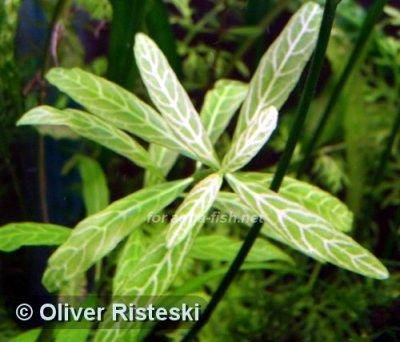

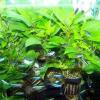 Hygrophila corymbosa
Hygrophila corymbosa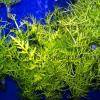 Hygrophila difformis
Hygrophila difformis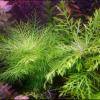 Hygrophila difformis variegated
Hygrophila difformis variegated Hygrophila guianensis
Hygrophila guianensis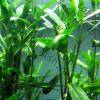 Hygrophila polysperma
Hygrophila polysperma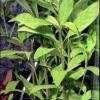 Hygrophila salicifolia
Hygrophila salicifolia Synnema triflorum
Synnema triflorum